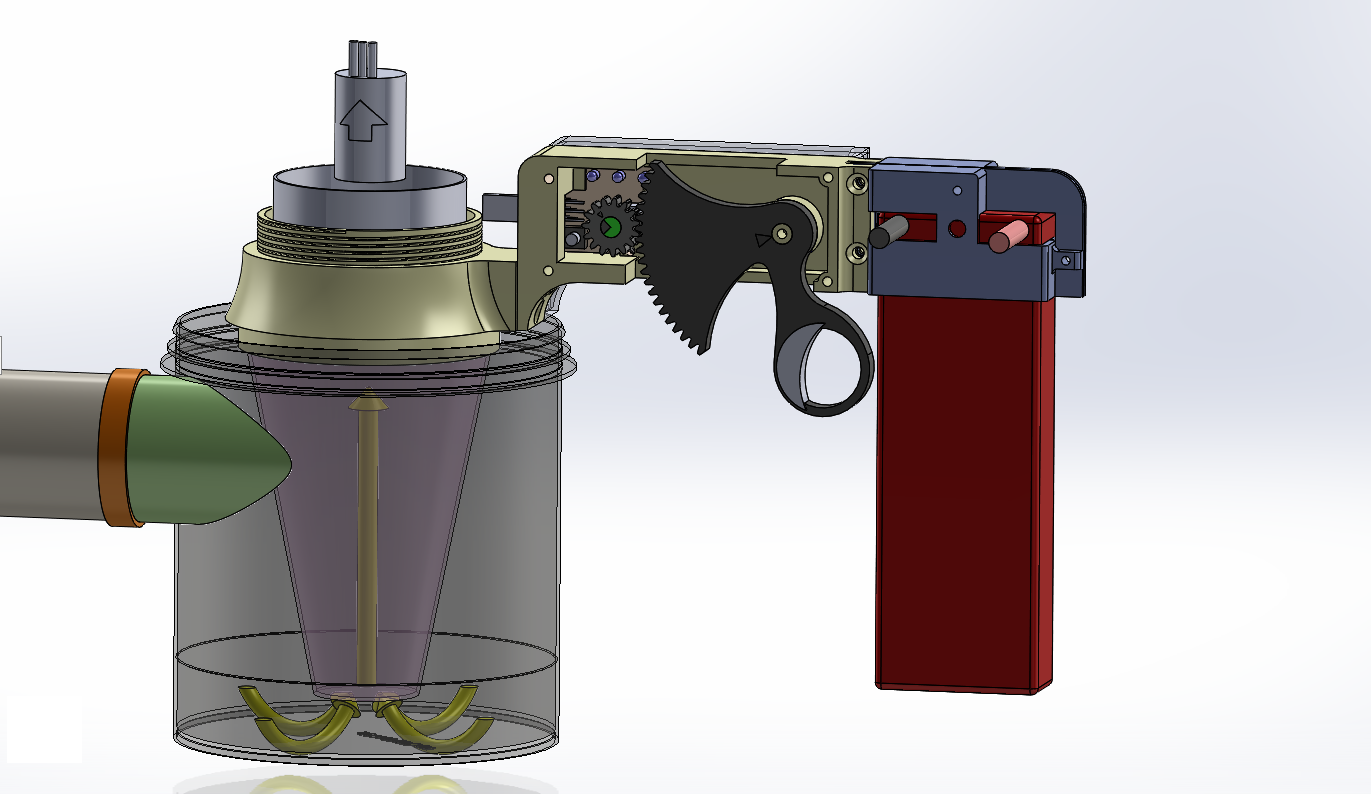
This picture shows the design that I made for the first iteration. Some prior decisions were made before starting to sketch:
- Custom parts should be 3D printable at home; they should be as compact as possible, so 3D printing of the parts does not take days to make them.
- The LIPO battery will be also the handle of the vacuum cleaner. A 2 part bracket will keep it connected to the main body.
- The battery must be easily taken out of the system, if necessary, and must be rechargeable without taking it out.
- A standard servo tester will be used. It is normally contrlled by rotating a trimmer. A gear-based system will be designed to control it with one hand, pulling a trigger.
- Air intake system has to be modular.
 Madaeon
Madaeon
Discussions
Become a Hackaday.io Member
Create an account to leave a comment. Already have an account? Log In.
Hi, thanks for your comment. The current prototype works (dust and small debris do stay in the bottom of the container, not on the filter), but what you say is also correct and would surely improve the efficency a lot; I will have a look at the design you suggest.
Thanks for your help, and like this project if you want to support it!
Are you sure? yes | no
I have not build a cyclone myself - so take my advice with a grain of salt - but I read quite a lot about them a while ago. They are quite popular in wood working as they can separate large amounts of wood shaving without clogging up a filter.
Even with my very limited knowledge it is quite obvious that your design won't work. You need a place where the dust actually stays. In the Dyson drawing you can clearly see that there is a container at the bottom for this purpose. It is also important that the airflow cannot reach to this area and pick the dust up again.
To help with this the exit tube only extents into the swirling chamber as far as needed to prevent entering air to take the direct route to the exit. This is also visible in the drawing.
The airflow arrows in the picture here on the other hand show clearly that any dust on the floor will immediately picked up and dragged out on the most direct route possible.
A way to work around this without adding a long cone to the bottom is the Thien baffle which splits the chamber into a high and low air speed part of which the lower one stores the dust. A quick google search should show you lots of DIY examples from the woodworking community.
Are you sure? yes | no